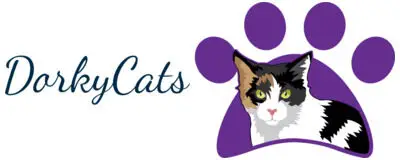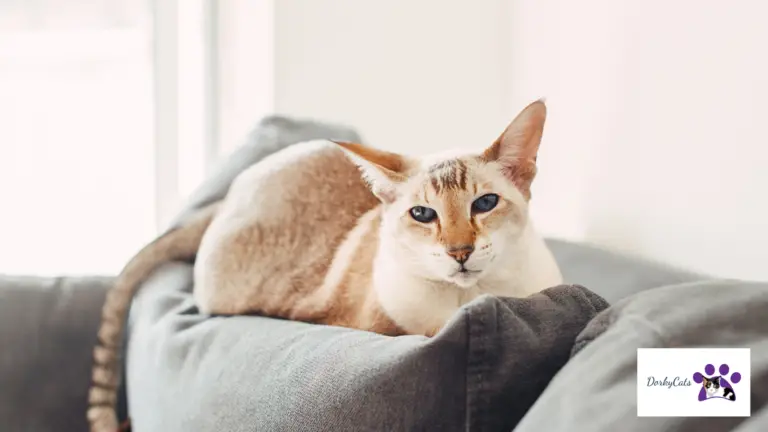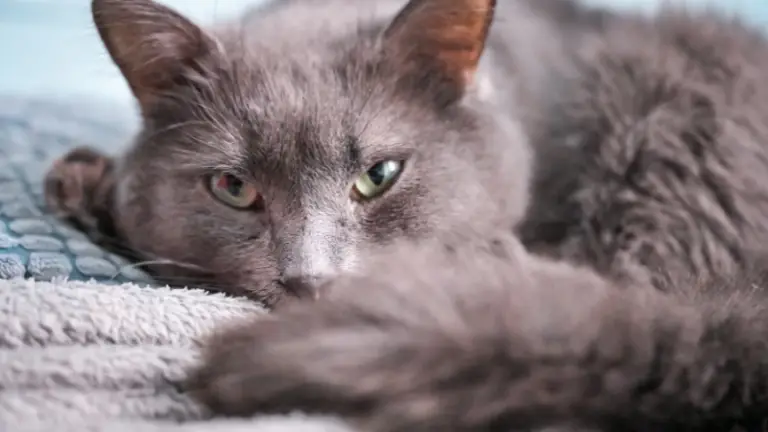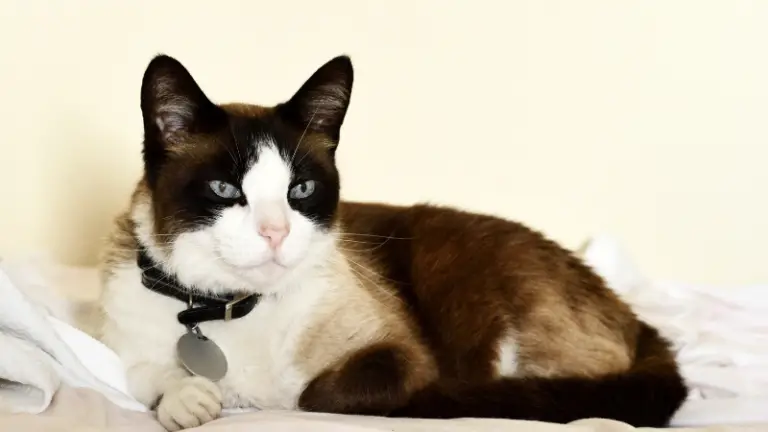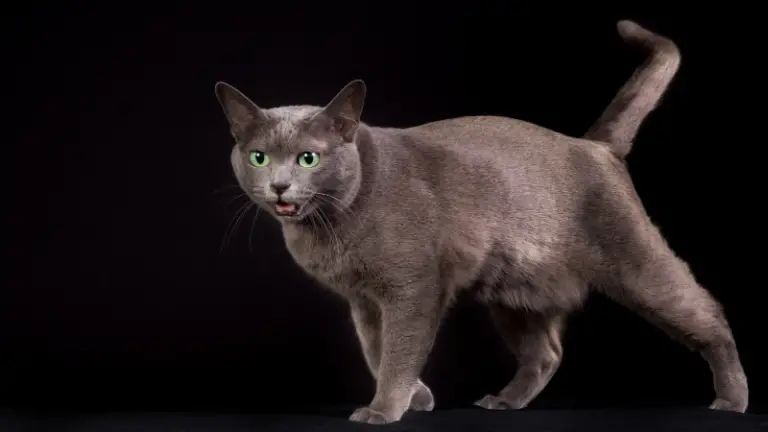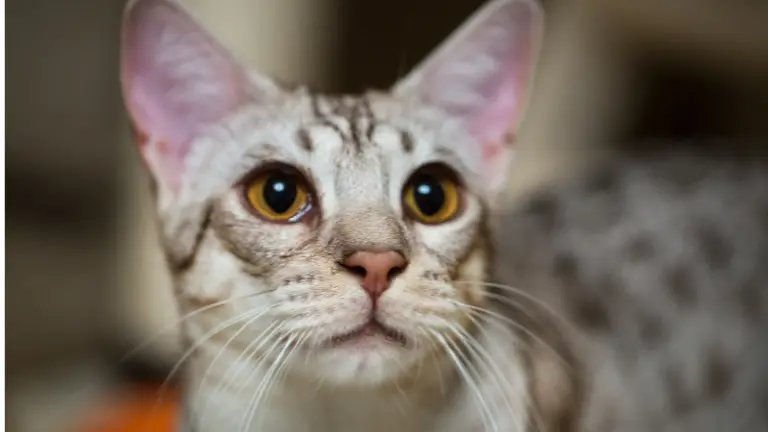BURMILLA CAT PERSONALITY AND BREED (ALL YOU NEED TO KNOW)
Would you like to know more about the Burmilla cat personality? This particular breed stands out because it was the first ever to be created with a “reliable temperament” required as a part of its official evaluation standard.
Burmillas are very charming cats and, of course, excellent companions. At a glance, the Burmilla cat has gorgeous coloring, excellent temperament, a good range of colors, and is easy to brush.
Let’s see all the details of the Burmilla cat personality and breed.

WHAT IS THE BURMILLA CAT GENERAL ASPECT AND SIZE?
The Burmilla was born from the crossing between a Burmese and a Persian Chinchilla and has immediately conquered an honored place in the heart of cat lovers worldwide.
The coat of the Burmilla can be shaded or tipped, depending on the length of pigmentation on individual hairs, which creates an exceptionally bright appearance.
This is a trait inherited from the ancestor Persian chinchilla. However, thanks to their Burmese ancestry and the short-haired coat, generally, these cats are classified within the Asian group.
They can be reproduced in both normal and silver versions. Brushing is simple, although some specimens have a softer coat than others.
▷ The tipping on the back darkens as the cat gets older.
“The mark of the scarab” is a typical color spot of this breed. It is an M-shaped coloration evident on the head, between the eyes. The Burmilla eyes are expressive and round-shaped and may vary from green to gold.
The Burmilla doesn’t have a tabby coloration on the body.
CHARACTERISTICS OF THE BURMILLA CAT
| Characteristic | Description | Notes |
|---|---|---|
| In summary | In the case of kittens, it is not always easy to foresee their future aspect | |
| Personality | Relatively relaxed, much more so than the Burmese. It is not just a lap cat | |
| Appearance | The color spots of the breed are very refined and unusual | The motifs of the Burmilla vary from individual to individual |
| In the house | Love company. Learn fast and adapts to habits | Excellent companion, especially if the owner spend all day at home |
| Behavior | He has a playful side, he especially enjoys chasing balls, and appreciates the attention | He is curious and loves explorations |
| Most common health problems | He can suffer from renal polycystic, although it is not a widespread problem | |
| Grooming | Appreciate brushing, but this activity is less essential than in other breeds | |
| Size | Medium, from 4 to 7 kg | |
| Ears | Well-spaced, wide at the base, and with rounded tips | |
| Eyes | Slightly oblique, expressive and wide open | |
| Head | Round, of medium size, full cheeks and round | |
| Paws | Medium bone in proportion to the body and tail | |
| Coat | Short, shiny, and silky, and with a giving undercoat | |
| Allowed colors | Silvered \ shaded, brown tipped, black shaded, lilac, chocolate |
WHAT IS THE HISTORY OF THE BURMILLA CAT?
This breed was born by chance in 1981 due to an unexpected mating between a Persian chinchilla and a lilac Birman, from which four black-shaded silver kittens were born, all with short and dense coats.
The name of the breed derives from the fusion of the English term Burmese (Burmese) with chinchilla, hence precisely Burmilla. Less lively than authentic Burmese and much more talkative than chinchillas, these cats love to play, show affection and are unexpectedly mild in nature.
They are among the more eclectic feline companions, suitable for living with lonely people of whatever age and in a family. They love to receive attention and build a close bond with humans.
WHAT IS THE ORIGIN OF THE BURMILLA?
The Burmilla is a relatively young breed. The Burmilla gathers its origins in its name: this magnificent cat descends, in fact, from a cross between a Persian chinchilla and a lilac Burmilla.
The first selection took place in 1981, after a mating occurred accidentally, by the baroness Miranda von Kirchberg with the intent to select a breed that presented the coloration of the mantle of the chinchilla and the morphology of the Burmese.
But the way toward a definitive standard is still in progress. Immediately the first club was founded dedicated to this breed, and after two years, finally came the recognition by TICA on the occasion of a show to which some participated specimens of the Burmilla.
Currently, the Burmilla finds its greater diffusion, especially in Denmark and Great Britain. The FIFE recognized the breed in 1996.
BURMILLA VARIETIES ARE STILL UNKNOWN
The Burmilla falls into the category of short-haired breeds, although in reality, it is not the only one-coat variety existing.
Relatively rare is the variant with semi-long hair, which is silky to the touch and close to the body; the peculiarity of the coat length is due to a recessive gene that can manifest from short-haired parents.
Specimens of this variety have such a voluminous tail that they look almost feathered. There is also another less known type, which is not recognized; it is called “plush” for the hair of an intermediate length between the short and the semi-long, exceptionally soft and thick.
BURMILLA CAT PERSONALITY

The perfect fusion of Persian chinchilla and Burmese sired a cat from the look undoubtedly magnificent but an even more intriguing personality. The Burmilla reflects, in fact, perfectly the intelligence and vivacity of the Burmese e the royal calmness of the Persian.
The Burmilla’s generally quiet nature hides a strong rattle. However, the Burmilla is a cat definitely friendly that grows fond with ease of all components of the families.
AN ADVICE
Never leave your Burmilla alone for too long, and carve out at least half an hour every day to play with your little friend.
He likes to be always at the center of attention, and if anyone forgets about his presence, he immediately reproaches him with shrill meows. But on the other hand, he is playful and lives very well in the apartment.
A Burmilla can be paired only with the Asian, Burmese, and Tiffany breeds.
In addition, the Burmilla, even as an adult, keeps the character traits he had as a kitten.
HOW TO CARE FOR AND FEED THE BURMILLA CAT
As a short-haired breed, the Burmilla does not require special care: generally, one
brush performed with horsehair brushes once a week is enough to maintain the coat’s luster and softness.
However, in the case of a dirty ear, you can resort to a specific product. His diet must include the right amount of proteins and carbohydrates accompanied by low fats.
For this reason, packaged food is ideal; taking care (especially with this breed) to always choose first quality food to avoid damage to the kidneys, which are the weak point of the Burmilla.
During weaning, it is necessary to give light food, perhaps supplemented with milk, strictly of goat, which is more easily digested. With advancing, age must also change
the diet that must be dairy-free and much richer in fiber to help the metabolism to stay active.
This breed’s peaceful nature does not limit his playful character.
AN ADVICE
Remember that the Burmilla inherited from the ancestor Persian not only the elegant appearance but also the tendency to suffer from kidney stones.
FREQUENTLY ASKED QUESTIONS
What is the Burmilla cat price?
Burmilla cats can cost between $800 and $2000. The price depends on the kitten’s age, the breeder, and the purity of the breed.
Are Burmilla cats friendly?
Burmilla cats are amiable and affectionate cats. They are always looking to participate in the life of their families and are not aggressive at all. They are known to be calm cats.
How do I know if my cat is a Burmilla?
The Burmilla cats have pretty round heads and short, shiny coats. In addition, it is soft to the touch. You can also recognize them from the silver fur tipped with brown shades. The admitted colors are silvered-shaded, brown-tipped, black-shaded, lilac, and chocolate.
Can Burmilla cats go outside?
If you want to let your Burmilla out, they should be supervised or walked on a leash. This is because they are pretty calm cats and might not react fast enough to other predators or dangers.
How long do Burmilla cats live?
Burmilla cats can live up to 12 years. However, proper food and care can prolong the life expectancy of these magnificent cats.
